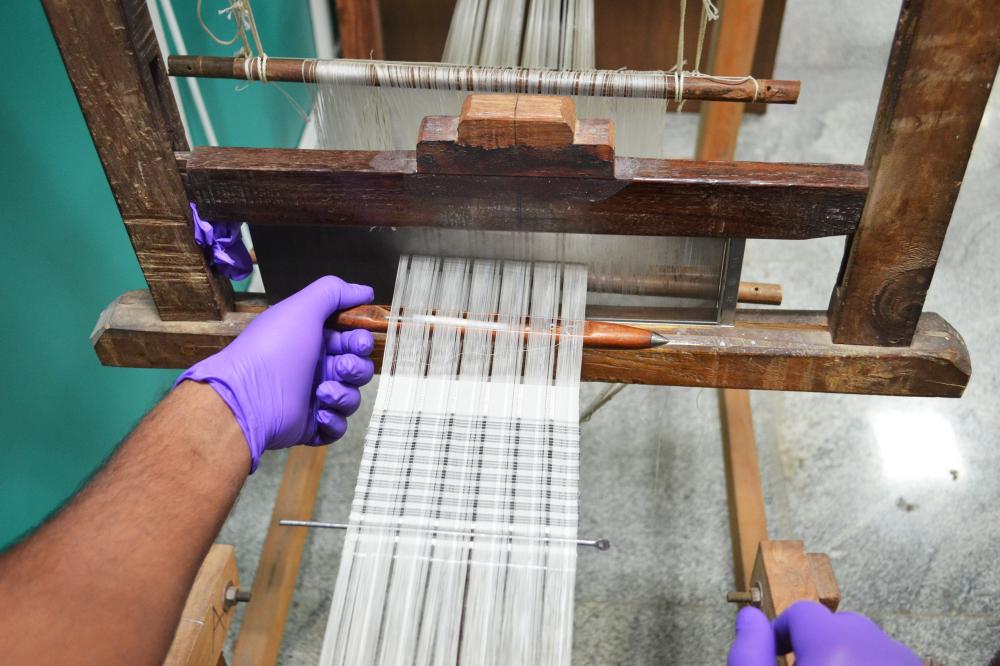It’s a new way to do silk screening, that’s for sure.
Bangalore-based Achira Labs has figured out a way to hand weave diabetes test strips from silk. That sounds pretty luxurious compared to the standard materials of plastic or paper. But silk turns out to have several advantages in a country like India, where weavers who can work a handloom are abundant and the material is readily available and inexpensive.
Many people with diabetes depend on these little strips to monitor their blood sugar levels. They prick a fingertip, dab a blood drop onto a test strip and then feed the strip into a glucose reader. The idea to use silk for medical sensors isn’t new for Achira labs, which has made silk strips that change color when they detect a deadly type of diarrhea in diapers.
The new silk strips for diabetics, which will roll out this year, give the same information as other types of glucose strips but are easier to manufacture. Plastic and paper strips are typically sprayed with enzymes that break down blood sugar into electricity. Then a machine has to embed electrodes in the material, so the electrical signals can be transmitted into the glucose meter. Achira’s silk sensors only require the spray. The coated threads can conduct the electrochemical signals.
Those silk sensors would meet the FDA’s stringent standards for detecting blood sugar, says MIT chemical engineer Patrick Doyle, who serves as an unpaid adviser for Achira.
And the cost is lower. Right now, a box of 100 paper or plastic strips costs about 1,600 Indian rupees or $25. A box of silk strips will cost one-third to one-quarter of that, says Mithila Azad, director of Achira’s fabric diagnostics division, which has developed the fabric sensors over the last 18 months.
The price point is especially critical in India, which has the second highest number of diabetes cases in the world – 66.8 million – behind China. A low-income Indian family supporting a diabetic relative may spend up to 25 percent of its income on care, according to the World Health Organization, while a similar family in the U.S. might spend around 10 percent.
The strips also create new ways for women weavers to earn money. The weavers who work for Achira are pumping out 100,000 strips every six hours using a traditional handloom.
More weavers should soon be joining them. Last summer, Achira began scouting for a way to weave and distribute the strips in low-income communities. The company teamed with the Working Women’s Forum, which helps marginalized women with handicraft skills, like silk weaving, start small businesses.
This spring, thanks to a $100,000 grant from Grand Challenges Canada, the team will recruit women to open five weaving hubs in rural and suburban towns across Tamil Nadu, a southeastern state where one in 10 people have diabetes. The weavers will run each hub, manufacturing and distributing the silk strips in their communities.
“Any weaver can make it. That’s the beauty. It can give a boost to the small-scale weaving industry,” says electrical engineer Siva Vanjari of the Indian Institute of Technology, who isn’t involved with the project.
But don’t look for silk test strips in U.S. pharmacies. The high price of importing silk means that in the United States, the fabric will likely be reserved for scarves and stockings.
9(MDA3MTA1NDEyMDEyOTkyNTU3NzQ2ZGYwZg004))
